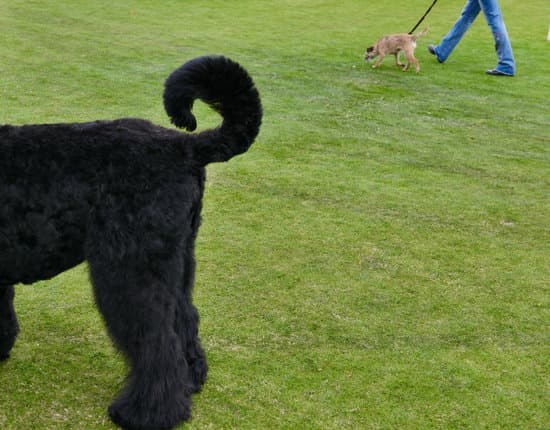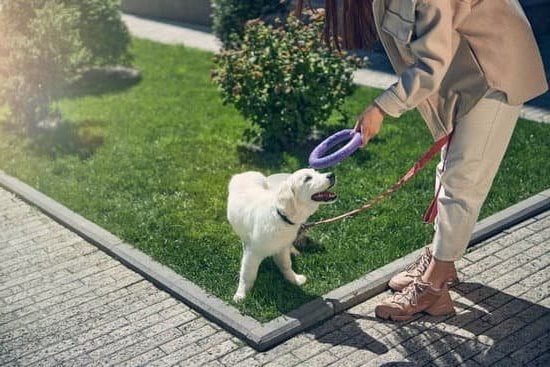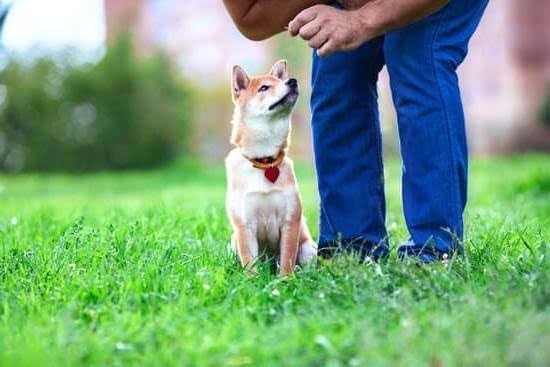Agility training for dogs is a fun and challenging way to keep your furry friend active and engaged. Whether you have a high-energy pup or just want to try something new with your dog, agility training can provide numerous physical and mental benefits. In this article, we will explore the basics of agility training, the benefits it offers to both dogs and their owners, as well as tips for getting started and avoiding common mistakes.
Agility training is a popular canine sport that involves navigating obstacle courses with speed and precision. It requires dogs to climb, jump, weave through poles, and navigate tunnels, all while under the guidance of their handler. This type of training not only improves a dog’s physical fitness but also enhances their obedience and mental focus.
In the following sections, we will delve into the various aspects of agility training for dogs, including the benefits it provides, the essential equipment needed, step-by-step guides for beginners, advanced techniques, safety tips, and success stories from dog owners who have witnessed the positive impact of agility training on their furry companions.
Whether you’re looking to compete in agility trials or simply want to engage in a fun activity with your dog, this comprehensive guide will help you get started on the right paw.
The Benefits of Agility Training for Dogs
Agility training for dogs offers a wide range of benefits for both the canine athlete and their owner. From physical and mental stimulation to improved obedience and behavior, agility training can have a significant impact on a dog’s overall well-being.
Physical Benefits
One of the primary benefits of agility training for dogs is the improvement of their physical fitness. Through jumping, weaving through poles, and navigating obstacles, dogs develop better coordination, strength, and endurance. This type of exercise can also help in maintaining a healthy weight and preventing obesity, which is crucial for your dog’s overall health.
Mental Stimulation
Agility training is not just about physical activity; it also provides mental stimulation for dogs. They must learn to process information quickly in order to navigate a course effectively. This mental challenge can help prevent boredom and reduce destructive behaviors that result from excess energy or lack of mental stimulation.
Bonding and Obedience
Another benefit of agility training is the opportunity it provides for strengthening the bond between dogs and their owners. Working together as a team to tackle obstacles helps improve communication and trust between the two, leading to better obedience overall.
By incorporating agility training into your dog’s routine, you can ensure that they receive an adequate amount of both physical exercise and mental stimulation while also deepening the bond you share with them.
Understanding the Basics of Agility Training
Agility training for dogs is a popular and fun way to keep your furry friend active and engaged. This training involves a variety of obstacles and challenges that your dog must navigate through, such as tunnels, jumps, weave poles, and more. Understanding the basics of agility training is essential for both you and your dog to have a successful and enjoyable experience.
Benefits of Agility Training
Agility training offers numerous benefits for dogs, including physical exercise, mental stimulation, improved obedience and communication between dog and owner, and increased confidence. It’s a great way to improve your dog’s coordination, balance, and overall fitness level. Additionally, agility training also provides an opportunity for bonding between you and your pet.
Basic Techniques
The key to successful agility training lies in mastering the basic techniques. Teaching your dog basic commands such as sit, stay, come, and heel are crucial for their safety and success on the course. Additionally, introducing them to various obstacles at a slow pace will help them gain confidence in navigating through the course. Start with low jumps or simple tunnels before progressing to more complex obstacles.
Training Methods
Positive reinforcement is one of the most effective methods for agility training. Using treats, praise, or toys as rewards can motivate your dog to perform well during training sessions. It’s important to be patient with your furry companion and work at their pace. Consistency is key when teaching new skills or correcting behaviors during agility training sessions.
Understanding the basics of agility training will pave the way for a rewarding experience for both you and your dog. With patience, practice, and positive reinforcement, you’ll soon be on your way to becoming an agile team on the course.
Choosing the Right Equipment for Agility Training
When it comes to agility training for dogs, choosing the right equipment is essential to ensure a safe and effective training experience. The right equipment can help your dog build confidence, improve their physical fitness, and strengthen the bond between you and your furry friend. Here are some key pieces of equipment you’ll need to get started with agility training:
- Jumping obstacles: These include hurdles, tire jumps, and weave poles. Jumping obstacles help improve your dog’s coordination, endurance, and speed.
- Tunnels: Tunnels are a fun and exciting part of agility training for dogs. They help improve your dog’s confidence as they navigate through the tunnel without hesitation.
- A-frame: This piece of equipment consists of two ramps meeting at the top to form an “A” shape. It helps strengthen your dog’s hind legs and encourages them to conquer their fear of heights.
- Pause table: The pause table is a raised platform where your dog will learn to stop and stay for a designated period. It helps improve their obedience and focus during the training session.
It’s important to choose equipment that is suitable for your dog’s size, breed, and skill level. Additionally, always prioritize safety when selecting agility training equipment for your pup. Look for durable materials, secure construction, and proper padding to prevent any injuries during training sessions.
In addition to these standard pieces of agility equipment, there are also various accessories such as tunnels bags, target sticks, leash options good for running etc. that can enhance the agility training experience for both you and your dog.
Now that you understand the essential equipment needed for agility training with your dog, you can start setting up your own agility course to begin this exciting journey together.
Step-by-Step Guide to Starting Agility Training With Your Dog
Agility training for dogs is a great way to provide both physical and mental stimulation for your furry friend. Not only does it help improve their overall fitness, but it also strengthens the bond between you and your dog. If you’re considering starting agility training with your dog, here’s a step-by-step guide to help you get started.
First, it’s important to assess your dog’s current level of obedience and physical ability. Basic commands such as sit, stay, come, and heel are essential for agility training. If your dog doesn’t have a solid grasp of these commands, consider enrolling them in obedience classes before beginning agility training. Additionally, ensure that your dog is in good physical health before starting any type of rigorous exercise program.
Next, familiarize yourself with the basic obstacles used in agility training, such as tunnels, jumps, weave poles, and A-frames. You can either purchase or make these obstacles yourself using PVC pipes or other readily available materials. Once you have the necessary equipment, find a suitable space to set up the course. A backyard or local park with enough open space is ideal for practicing agility training with your dog.
Finally, start at a slow pace and gradually increase the difficulty of the course as your dog becomes more confident and skilled. Use positive reinforcement such as treats and praise to encourage your dog during training sessions. Remember to be patient and keep training sessions short to prevent burnout for both you and your dog.
| Obstacle | Description |
|---|---|
| Tunnel | A long tube that dogs run through |
| Jumps | Bars at different heights for dogs to jump over |
| Weave Poles | Poles arranged in a line that dogs weave through |
| A-Frame | An obstacle shaped like an ‘A’ that dogs climb up and down |
By following this step-by-step guide and being consistent with practice sessions, you’ll be well on your way to enjoying the benefits of agility training with your dog.
Common Mistakes to Avoid in Agility Training
Agility training for dogs can be an exciting and beneficial activity for both you and your furry friend. However, there are some common mistakes that dog owners can make when it comes to agility training. By being aware of these pitfalls, you can ensure a positive and successful experience for you and your dog.
Here are some common mistakes to avoid in agility training:
1. Lack of Patience: One of the most common mistakes dog owners make in agility training is expecting too much too soon from their canine companion. Just like humans, dogs need time to learn new skills and build confidence on the agility course. It’s important to be patient and allow your dog to progress at their own pace.
2. Inadequate Warm-Up: Failing to properly warm up your dog before an agility training session can lead to injuries. Take the time to engage in light exercises and stretches with your dog before diving into more demanding activities on the course.
3. Overtraining: While consistency is key in agility training, it’s important to strike a balance and avoid overtraining your dog. Pushing them too hard too quickly can lead to physical and mental burnout. It’s crucial to pay attention to your dog’s cues and provide adequate rest periods.
By avoiding these common mistakes, you can set the stage for a positive and rewarding agility training experience for both you and your beloved pet.
Advanced Techniques for Agility Training
Once your dog has mastered the basic agility training techniques, you may want to consider moving on to advanced techniques to further challenge and stimulate them. These advanced techniques can help improve your dog’s coordination, speed, and overall performance in agility courses. It is important to note that these advanced techniques should only be introduced once your dog has shown proficiency in the basic skills.
One advanced technique for agility training is teaching your dog to perform more complex obstacles such as the weave poles or teeter-totters. These obstacles require a higher level of precision and control from your dog, as well as a deep understanding of cues from their handler. It is crucial to introduce these obstacles gradually and with positive reinforcement to ensure that your dog feels confident and comfortable while tackling them.
Another advanced technique for agility training is incorporating more speed and dynamic movements into your training sessions. This could involve setting up courses with tighter turns, longer jumps, and faster sequences to challenge your dog’s physical abilities and mental acuity. By continuously pushing the boundaries of what your dog can achieve, you are helping them build endurance, strength, and resilience in agility courses.
Lastly, introducing distance handling is an essential advanced technique in agility training. This involves teaching your dog to respond to cues even when they are at a distance from you. This level of communication and trust between you and your dog is crucial for success in competitive agility trials. Distance handling can take time to master, but with patience and consistency, you can help your dog become a more agile and independent competitor.
Overall, incorporating these advanced techniques into your dog’s agility training regimen can help take their skills to the next level. However, it is important to always prioritize safety, patience, and positive reinforcement throughout the process of teaching these more challenging maneuvers. Agility training for dogs should always be a fun and rewarding experience for both you and your canine companion.
Safety Tips for Agility Training With Your Dog
Agility training for dogs can be an incredibly fun and rewarding activity, but it is important to prioritize safety to ensure both you and your furry friend have a positive experience. Safety should always be the top priority when engaging in agility training with your dog, as the various obstacles and high-energy nature of the sport can pose potential risks.
By following some key safety tips, you can help minimize potential hazards and create a safe environment for your dog to excel in agility training.
One of the most important safety tips for agility training with your dog is to make sure that they are physically fit and healthy enough to participate in such activities. Before starting agility training, it is crucial to consult with your veterinarian to ensure that your dog is in good physical condition and won’t be at risk of injuries during training.
Additionally, providing adequate warm-up exercises and stretches before each session can help prevent muscle strains or other physical issues.
Another essential safety tip is proper supervision during agility training sessions. Being present and attentive while your dog navigates through the course can help prevent accidents or injuries. Always remain close by to provide guidance and support throughout the process. Additionally, using positive reinforcement techniques rather than punishment will create a safer and more enjoyable environment for your pet.
Finally, ensuring that the agility equipment is set up correctly and securely will contribute to a safer training environment for your dog. Whether you’re using tunnels, jumps, weave poles, or other obstacles, it’s crucial to inspect the equipment regularly for any signs of wear or damage. Proper maintenance and secure assembly of these elements will help prevent accidents during training sessions.
By incorporating these safety tips into your agility training routine, you can create a secure environment for both you and your dog while enjoying this exciting sport together.
How to Incorporate Agility Training Into Your Dog’s Exercise Routine
Agility training for dogs is an excellent way to incorporate both physical and mental exercise into your dog’s routine. The benefits of agility training for dogs go beyond just providing a fun activity for your furry friend – it also helps improve their overall health and behavior. By including agility training in your dog’s exercise routine, you can ensure that they are getting the physical activity they need while also keeping their mind engaged.
When incorporating agility training into your dog’s exercise routine, it’s important to start slowly and gradually increase the level of difficulty. Begin with simple activities such as weaving through poles or jumping over low hurdles, and then progress to more complex courses as your dog becomes more comfortable with the exercises. It’s also essential to be patient and provide positive reinforcement during the training process to encourage your dog and create a positive experience.
In addition to agility-specific exercises, you can also incorporate elements of agility training into your regular walks or playtime with your dog. For example, practicing obedience commands such as sit, stay, or come while on a walk can help improve your dog’s focus and response time, which are essential skills for agility training. By integrating these activities into your dog’s daily routine, you can continue to build their confidence and abilities in a variety of settings.
| Benefits | Details |
|---|---|
| Physical Exercise | Agility training provides an outlet for your dog to release energy in a constructive manner, improving their overall physical fitness. |
| Mental Stimulation | The problem-solving aspect of agility training keeps dogs mentally engaged and helps prevent boredom or destructive behaviors. |
| Bonding | Working together on agility exercises strengthens the bond between you and your dog through communication and teamwork. |
Success Stories
As evidenced by the success stories shared in this article, agility training for dogs has had a profound impact on both dogs and their owners. The benefits of agility training extend beyond physical exercise, providing mental stimulation and a sense of accomplishment for both canine and human participants. These success stories serve as a testament to the transformative effects of agility training, showcasing the remarkable progress and achievements that can be made through dedication, patience, and consistent training.
For many dog owners, agility training has not only improved their pet’s overall health and behavior but has also strengthened the bond between them. Through the challenges and triumphs of agility training, owners have witnessed their dogs’ growth in confidence, focus, and agility skills. Moreover, the teamwork and communication developed during these training sessions have fostered a deeper connection between dogs and their owners, laying down a foundation for trust and understanding that extends far beyond the course.
In conclusion, these success stories illustrate the extraordinary impact of agility training on dogs’ physical abilities, mental well-being, and relationship with their owners. By incorporating agility training into their exercise routine, countless dogs have experienced significant improvements in various aspects of their lives. Ultimately, these stories serve as an inspiration to dog owners everywhere, encouraging them to explore the world of agility training as a means to enrich their canine companions’ lives and strengthen the special bond they share.
Frequently Asked Questions
What Age Should Dogs Start Agility Training?
Dogs can start agility training around the age of 12-18 months, once their growth plates have closed. It’s important to avoid putting too much strain on their developing joints and bones.
How Do I Start My Dog on Agility Training?
To start your dog on agility training, begin with basic obedience training to ensure they understand commands like “sit,” “stay,” and “come.” Then introduce them to simple obstacles like tunnels and low jumps to build their confidence.
How Can I Improve My Dog’s Agility?
Improving your dog’s agility involves regular practice and training sessions. Focus on building their strength, flexibility, and endurance through activities like running, jumping, and climbing obstacles. Incorporating new challenges and varying the course will also help improve their agility skills over time.

Welcome to the blog! I am a professional dog trainer and have been working with dogs for many years. In this blog, I will be discussing various topics related to dog training, including tips, tricks, and advice. I hope you find this information helpful and informative. Thanks for reading!





